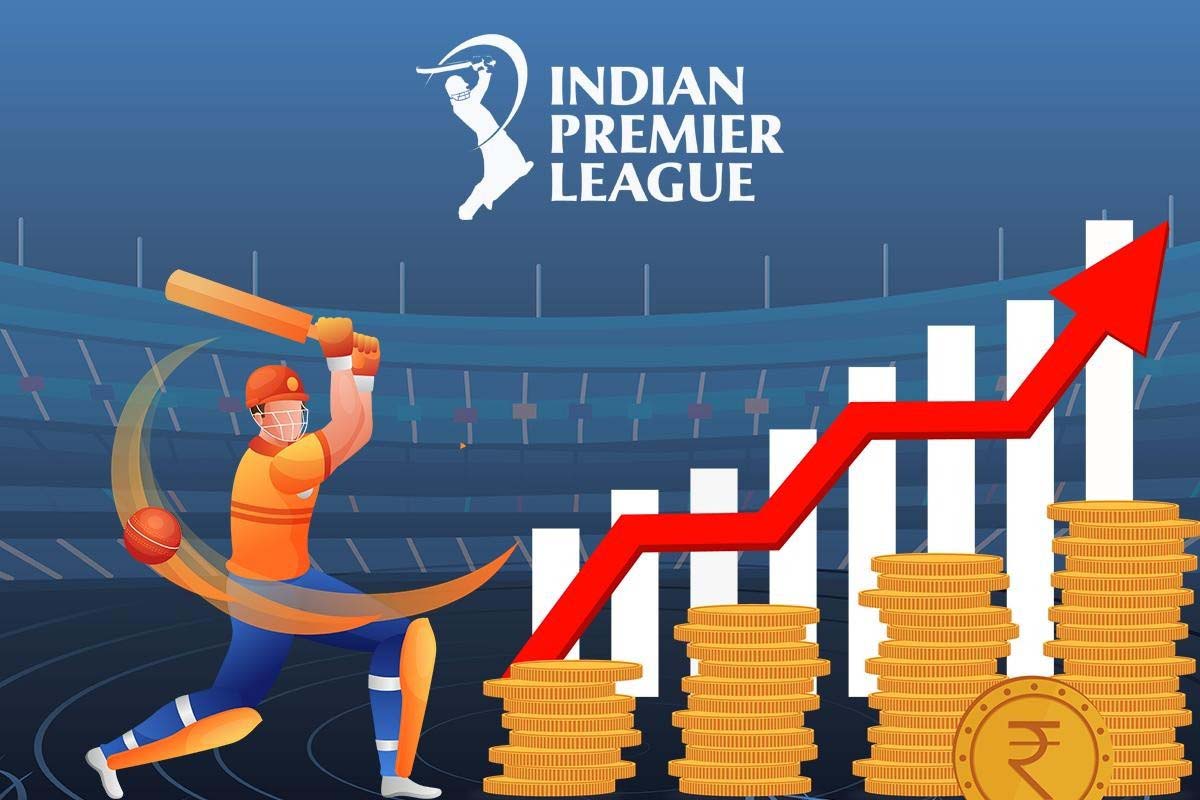What Goes Inside IPL Player Auction
Ever since the first IPL took place in 2008, it has undeniably changed the name of the game and has come to be India’s national adopted festival.
Among one of the most-watched events in the Indian Premier League (IPL) cycle, would have to be the IPL auction, hands-down! There’s a lot of buzz that surrounds this mega event and for all the right reasons.
The event is live-streamed for fans around the world who are eager to get a slice of all the action.
For the first time, since 2011, IPL will be a 10-team event with two new teams entering the league – Gujarat Titans and Lucknow Super Giants of Ahmedabad and Lucknow respectively. The auction this year will have 590 players set to undergo the scanner.
The economics of IPL has long been a topic of discussion. There are huge amounts of working capital that go into a massive event such as this.
Let’s get behind the workings of an IPL auction and take a closer look at the purse amount of the teams, how much money goes to the franchise, the players and the Board of Control for Cricket in India (BCCI).
The bidding event: IPL 2022 mega auction
The IPL auction is conducted annually to auction the cricket players to different franchises. The multi-day event is presided over by a dedicated auctioneer. The franchise owners go in for the win by bidding for their players. The day comes to an end by finalizing the squads for each team.
There are 3 categories of players — capped Indian players (players from India’s seniors’ team), uncapped Indian players (domestic Indian players) and Foreign players (any non-Indian players in the team).
Players in the common pool end up getting sold to the highest bidder. The players get to take a call on their base price which needs to be north of Rs. 10 Lakhs and not more than Rs. 2 Crores.
Did you know: Players have a lot of things to consider before setting their base price. They need to look at their recent form and past performance, in some cases even their social media following, to gauge their popularity. Not analysing these key factors could end up being risky as they may quote a base price too low, or worse — too high!
The existing 8 teams had an option to retain a maximum of 4 of their players. The retention process took place in November last year. Some of the franchise owners went all out to retain their core team while some have saved up for the auction.
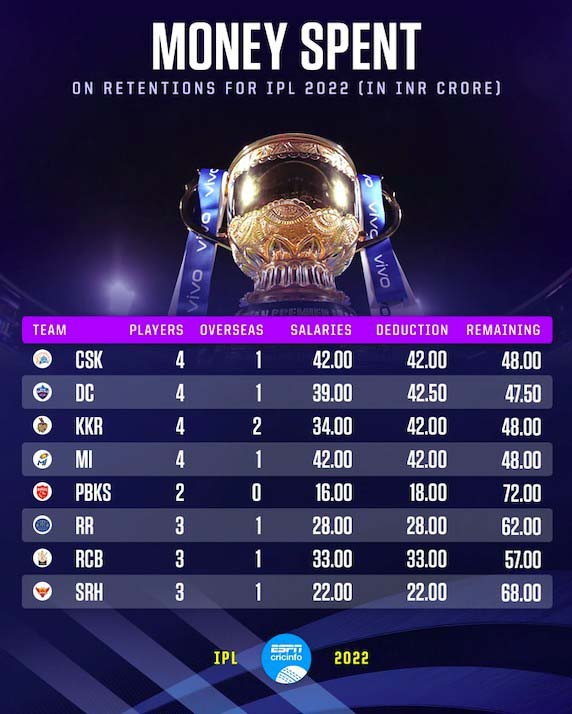
The players that go unsold need not lose heart. They can be bought by the franchises in the subsequent rounds called the ‘Accelerated Bidding’ round, where teams look to meet the minimum requirement of 18 players per squad.
Let’s talk money: The purse amount of IPL teams
It’s all about nailing down on a strategy to make the best use of the capital at hand. Teams go into the auction with big budgets. Along with betting on the right players, it’s equally important to pre-plan your working capital not just to set you off the ground for a particular season, but also to last you for the long run.
This year all 10 teams have been allotted Rs. 90 Crore as the purse amount for both retention and player auction, of which they need to spend a minimum of Rs. 67.5 Crore.
How you deal with your capital is crucial here — while franchises may be tempted to go big and bet on some of the top-ranking players or retain their biggest names on the squad, it’s important to keep some money in their kitty. It is after all a math game and devising a balanced strategy of the right opportunities coupled with your working capital, is the best way to go about it.
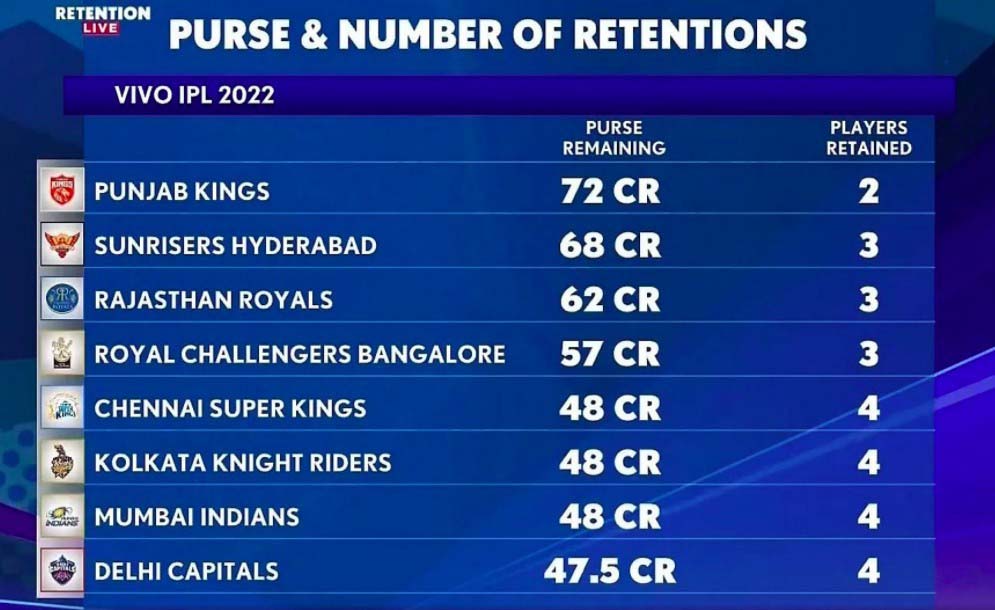
Who gets the auction money?
The auction money goes to the players, who are bought for a three-year contract. They are paid the amount they are bought for at the auction, for all the three years that they are retained by the team.
The salaries of the IPL players have been decided in their best interest. If the players want more money they can be released in the next auction. Or if in an unfortunate turn of events, the player gets injured and needs to sit out, they are still paid the amount in full, for the entire season.
Which player gets paid the most?
There is a disparity in salaries of IPL players as most franchise owners put at least 30% to 40% of their money on the top 5 players. Indian skipper Virat Kholi has been the highest-paid player, retained by Royal Challengers Bangalore by Rs. 17 Crore until last year. This year there’s been a dip to Rs. 15 Crore.
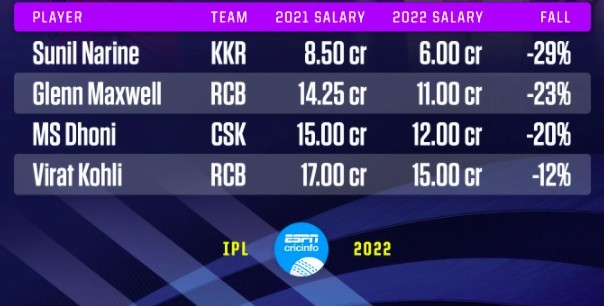
Income Sources: How do BCCI and the franchise owners earn their money?
Millions of money is spent on players during the IPL season. Let’s look at how all the money is earned.
- Title sponsors
The BCCI earns a larger chunk of its money from title sponsors. Vivo is the title sponsor up until 2023. Other official sponsors include the likes of Dream11, Jio, Goibibo.
Close to 60% of the money generated from sponsors is given by BCCI to the franchises. This is the guaranteed amount that franchise owners earn every season.
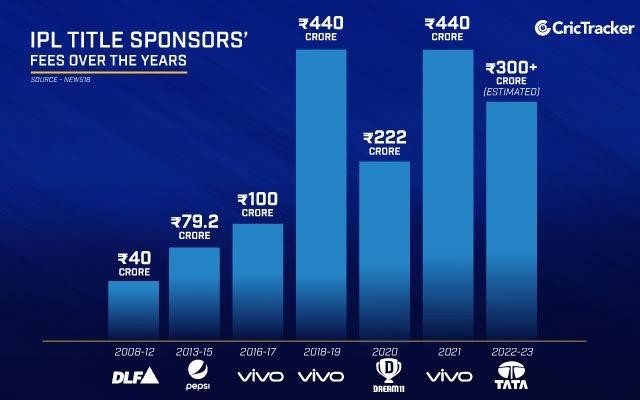
- Home Games
Each of the teams has home grounds assigned to them by the BCCI. Money from the ticket sales of home games goes to the IPL franchise owners.
- Team Sponsors
Each IPL team also has team sponsors — money generated from team sponsors also goes to the franchise owners.
- Merchandise and other sources
Additional income is earned from selling team merchandise like jerseys. Another source of income includes player trade-offs that happen after the auction, during the trading window. At this time, a franchise might buy a player for a higher amount than what was paid by the original franchise at the auction. This is all in addition to the prize money of Rs. 20 Crore that the winner takes away.
To wrap it up
A lot is riding on this IPL auction as it decides the fate of teams and players, alike.
The unpredictable nature of the auction makes it all the more exciting — you never know who is going to walk away with a multi-million dollar deal or which big player is going to be dropped from a team!
IPL is as much a serious business event as it is a gaming event. Identifying profitable opportunities and knowing how to strategically invest capital is what will help teams get the most out of this mega auction event.
Think Working Capital…
Think CredAble!
